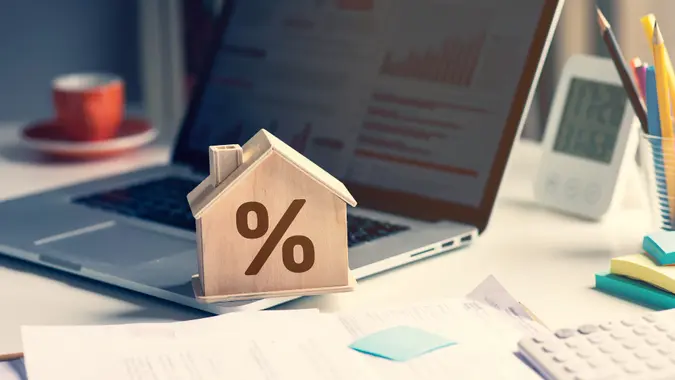5 Ways To Boost Your Chances of Getting a Mortgage If You’re a Freelancer or Self-Employed

Commitment to Our Readers
GOBankingRates' editorial team is committed to bringing you unbiased reviews and information. We use data-driven methodologies to evaluate financial products and services - our reviews and ratings are not influenced by advertisers. You can read more about our editorial guidelines and our products and services review methodology.

20 Years
Helping You Live Richer

Reviewed
by Experts

Trusted by
Millions of Readers
Running a small business or freelancing can be a profitable choice that gives you freedom and control. But when you need a mortgage, you might run into roadblocks, especially when you have fluctuating income or you’ve been self-employed for less than one or two years.
To reduce your risk to lenders and improve your chances of mortgage approval, do these five things before you apply.
1. Be Prepared With Extensive Documentation
According to Fannie Mae, self-employed borrowers must show that a financially strong business exists and that the income is stable and comes from in-demand services and products. Here are some important documents that can help meet these requirements:
- Business license (if applicable) and insurance
- Tax returns (business and personal) for the last two years
- Your business’s balance sheet and profit and loss statement
- Bank statements, 1099s and other income verification documents
- Contracts, client letters and other documents showing ongoing work
- Signed statement from your accountant
You’ll also want to show that you have sufficient personal cash reserves for the upfront mortgage costs and backup funds for future mortgage payments. If you also have a regular job, have your W-2 forms and pay stubs ready. Additionally, consider proof of past housing payments to help demonstrate you can make payments on time.
2. Opt for a Cheaper Property or Put More Down
Lenders usually average your net self-employment income for the last year or two to decide on your maximum loan amount. Since this figure can be less than what you currently earn, you may need to reduce your housing budget or make a bigger down payment to get approved.
Side benefits of a larger down payment include more affordable monthly payments and, if you put at least 20% down, no mortgage insurance.
3. Have Excellent Credit
Whether you’re employed by someone else or self-employed, having great credit makes you look less risky and might get you a better interest rate. Know your current debts and credit score so you can pay down balances, keep up a good payment history and take other credit-building steps before you apply for your mortgage.
4. Work on Your Debt-To-Income Ratio
Having a high monthly debt payment amount compared to your freelance or self-employment income won’t help your chances of getting a mortgage. According to Rocket Mortgage, you might get approved with a debt-to-income ratio of up to 50%, but your chances are best if it’s below 36%.
After you know where you stand, consider putting yourself in a better position by knocking out debts, boosting your income and being careful with business-related write-offs.
5. Consider Alternatives for Better Approval Chances
If your average income is too low, you’re new to self-employment or your credit isn’t great, you might need help to get a mortgage. You could try applying with someone who has a stable, high income and great credit situation. However, that person must accept the risk.
Another option is considering alternative mortgages, including stated income or no documentation loans. But since these can come with high mortgage rates and down payment requirements, you should speak to a lender about traditional options first.
More From GOBankingRates
 Written by
Written by  Edited by
Edited by 
























